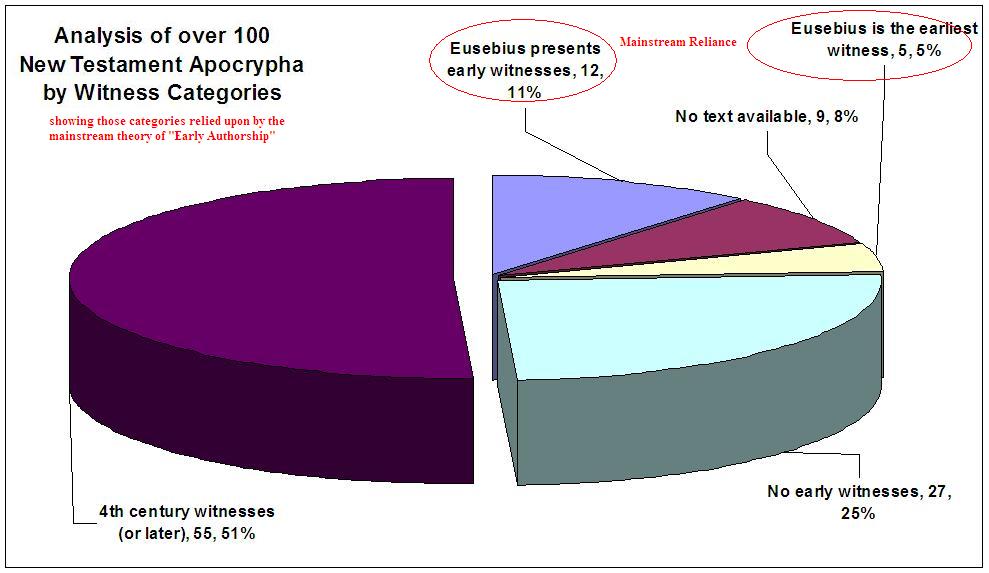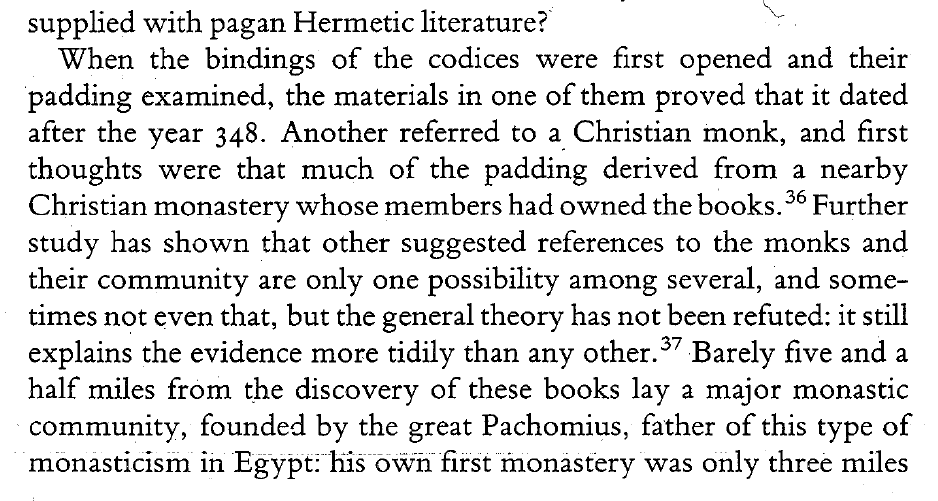
 |
Freethought & Rationalism ArchiveThe archives are read only. |
|
|
#221 | |||||||||||
|
Contributor
Join Date: Mar 2006
Location: Falls Creek, Oz.
Posts: 11,192
|
[
Quote:
Quote:
Quote:
The following from ben witherington's blog: Quote:
Radiocarbon dating the gJudas Quote:
THE GOSPEL OF JUDAS AND THE QARARA CODICES SOME PRELIMINARY OBSERVATIONS Peter M. Head, Tyndale Bulletin 58.1 (2007) 1-23. Quote:
Quote:
Obviously result 1) and 2) are ignored because they are from the binding, which is older than the paper the scribe used. The above report also states that result 2) dated 333 CE is specifically to be ignored. That leaves results 4) and 5) for the papyrus dating, and both are 279 CE with similar range of error. These two dates - for 4) Papyrus from page 9: AD 279 +/- 50 years; and 5) Papyrus from page 33: AD 279 +/- 47 years. - appear to be uncalibrated radiocarbon age estimates. As to how these two dates 4) and 5) became to be published as 280 CE plus or minus 60 years is not known to me. You must note that Peter Head states the final report was not available to his review, and IMO is still not available to the general public after seven years. |
|||||||||||
|
|
|
|
#222 | |
|
Contributor
Join Date: Mar 2006
Location: Falls Creek, Oz.
Posts: 11,192
|
Quote:
and the Temples of Sun and Artemis into stables. What did we have when it all started? |
|
|
|
|
|
#223 | ||
|
Contributor
Join Date: Mar 2006
Location: Falls Creek, Oz.
Posts: 11,192
|
Quote:
WIKI currently disambiguates two separate identities called Ammonius's in the 3rd century - Ammonius the christian and Ammonius a platonist theologian. WIKI also currently disambiguates two separate identities called Origen - the pupil of Ammonius, Origen the christian and Ammonius a platonist theologian. Eusebius appears to have engaged in the criminal practice of identity theft, by stealing the identities of well known and respected Platonist theologians, who were obviously part of the Apostolic lineage of Plato and his canon of books. With these stolen identities he fabricated part of his account of the Christian lineage. In case someone asks why didn't the Platonists complain about Eusebius's criminal practices, my answer is that Constantine had too many swords. Quote:
|
||
|
|
|
|
#224 | |||
|
Regular Member
Join Date: Dec 2011
Location: Bellingham, WA
Posts: 186
|
Quote:
|
|||
|
|
|
|
#225 | |
|
Contributor
Join Date: Mar 2006
Location: Falls Creek, Oz.
Posts: 11,192
|
Quote:
In order to be quite specific by what I mean by the Gnostic Gospels *etc* I have tabulated Over 100 The Gnostic Gospels and Acts - a review of the New Testament Apocryphal texts . I have personally read these over 100 texts where available, and the essay above about the chronology of the gnostic material is a result of this research. Here is a sample analysis: 
|
|
|
|
|
|
#226 |
|
Contributor
Join Date: Jun 2000
Location: Los Angeles area
Posts: 40,549
|
Please note that this rule is still in effect.
We will no longer entertain any new threads on mountainman's claim that Constantine or Eusebius invented Christianity in the fourth century, or that Arius wrote the non-canonical Christian literature, or that the non-canonical literature is parody, until mountainman or others produce some evidence. |
|
|
|
|
#227 |
|
Veteran Member
Join Date: Jun 2010
Location: seattle, wa
Posts: 9,337
|
What about my threads about how to pick up women at bars using Marcion and the ascetic tradition in early Christianity as a conversation starter?
|
|
|
|
|
#228 | |
|
Contributor
Join Date: Jun 2000
Location: Los Angeles area
Posts: 40,549
|
Quote:
Note that the primary rule is not to be boring. The Eusebius threads were getting boring. |
|
|
|
|
|
#229 | |
|
Regular Member
Join Date: Dec 2011
Location: Bellingham, WA
Posts: 186
|
Quote:
Your argument has been falsified over and over again, and you've yet to be able to directly engage a single point. I'm satisfied that no thinking adult who would ever make their way to this board could possibly find your argument compelling in light of what I've pointed out, so I'm going to chalk this up as a thorough and rather decisive loss for you unless you can provide, in your very next post, actual, positive, and compelling evidence that the second and third century dates for the Gnostic and New Testament texts is to be rejected. You don't have any such evidence anywhere on your website, just to preempt that lazy response. Come up with something compelling in your next post or you have lost this debate and will be put on ignore. |
|
|
|
|
|
#230 |
|
Regular Member
Join Date: Dec 2011
Location: Bellingham, WA
Posts: 186
|
Mountainman, I thought I would add something. I've just had the opportunity to look through Fox's book, Pagans and Christians, and I found the portion you insisted claimed the Nag Hammadi codices had been C14 dated to 348 CE. It's from p. 414, and here it is:
 Notice it does not say anything at all about C14 dating. What it actually states is what I stated earlier, that grain receipts incorporated into the cartonnage of Codex VII had dates on them, the latest of which corresponded to October of 348 CE. The actual binding of the codex must be later than that, since the receipts would have had to have been of no further use. The paleographic analysis of the cursive style of other texts of the cartonnage (which is much more accurate than majuscule) gives a date around 360 CE, which is perfectly in line with what we would expect. You have no C14 dates to speak of for Nag Hammadi. Once again, you have either misrepresented or entirely misunderstood the data for which you express such concern, and in doing so, you lead us to further corroboration of the value of paleographic analysis. Your graph is meaningless, as are your Gospel of Judas radiocarbon data. You're simply fabricating evidence out of thin air. You have no case whatsoever. Stop pretending you do. |
|
|
| Thread Tools | Search this Thread |
|